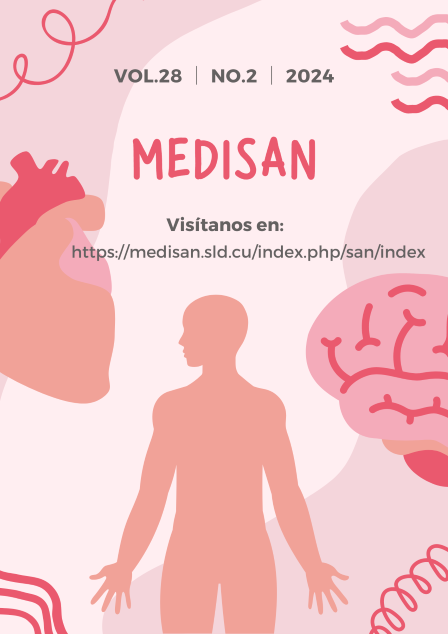Educational software for the subject Stratification of Environmental Risks
Keywords:
vector control, environmental hazards, software, higher education, information technology.Abstract
An investigation related to the technological innovation was carried out in the Health Nursing-Technology Faculty from Santiago de Cuba, during the school course 2019-2020, aimed at designing an educational software for the subject Stratification of Environmental Risks, directed to medium technician students in Surveillance and Vector Control. The theoretical methods used were: analysis-synthesis, historical-logical, modelation, systemic-structural and inductive-deductive; and the empiric methods were: observation and documental analysis. The sample had 44 students and 6 professors chosen at random. It was concluded that the proposed software is feasible, pertinent and necessary as teaching aid; provides up-to-date information, it is easy and interesting to surf internet, and allows the self-appraisal of students in the interaction with themselves, what contributes to improve the independent work.Downloads
References
2. León Trujillo B, Cárdenas Viviano RC, de la Cruz Miraval G, Marcellini Morales FR. Software educativo JCLIC: rendimiento académico de estudiantes de Educación Básica Regular de una institución educativa, Ambo-Perú. Revista Universidad y Sociedad. 2022 [citado 14/11/2022];14(S6):10-20. Disponible en: https://rus.ucf.edu.cu/index.php/rus/article/download/3428/3373/
3. Hernández García F, Robaina Castillo JI, Pérez Calleja NC, González Díaz EC, Angulo Peraza BM, Hidalgo Ávila M, et al. Oncopedia, software educativo para el aprendizaje de la oncología pediátrica en la carrera de Medicina. Inv Ed Med. 2020 [citado 02/10/2022];9(35):28-37. Disponible en: https://www.medigraphic.com/pdfs/invedumed/iem-2020/iem2035d.pdf
4. García Acosta I, Díaz Cala A, Gutiérrez Marante D. Los medios de enseñanza y las tecnologías de la información y las comunicaciones en la formación de tecnólogos de la Salud. Rev. Cienc. Méd. Pinar Río. 2014 [citado 20/10/2023];18(5):823-30. Disponible en: https://rus.ucf.edu.cu/index.php/rus/article/download/3428/3373/
5. Legrá Font I, Moll Rodríguez G, Ramón Montoya Z. Hiperentorno educativo para el aprendizaje de la informática y el proceso investigativo de las carreras de tecnología de la salud. Medisan. 2014 [citado 22/04/2022];18(12):1766. Disponible en: http://bvs.sld.cu/revistas/san/vol18_12_14/san201812.pdf
6. Saltos García MB, Capa Benítez LB, Carchi Arias KL. Análisis de riesgos ambientales en negocios de exportación, desde la perspectiva de las ciencias administrativas. Universidad y Sociedad. 2020 [citado 19/04/2022];12(1):330-6. Disponible en: http://scielo.sld.cu/pdf/rus/v12n1/2218-3620-rus-12-01-330.pdf
7. Mompié Rivero A, Pría Barros MC, Barrientos Rodríguez M, Cepero Ravelo M. Prototipo de multimedia educativa para la enseñanza-aprendizaje de los indicadores del recurso cama hospitalaria. Cuba, 2020. Rev. Cuba. Inform. Méd. 2022 [citado 22/11/2022];14(2):e544. Disponible en: https://rus.ucf.edu.cu/index.php/rus/article/download/3428/3373/
Published
How to Cite
Issue
Section
License
All the articles can be downloaded or read for free. The journal does not charge any amount of money to the authors for the reception, edition or the publication of the articles, making the whole process completely free. Medisan has no embargo period and it is published under the license of Creative Commons, International Non Commercial Recognition 4.0, which authorizes the copy, reproduction and the total or partial distribution of the articles in any format or platform, with the conditions of citing the source of information and not to be used for profitable purposes.





